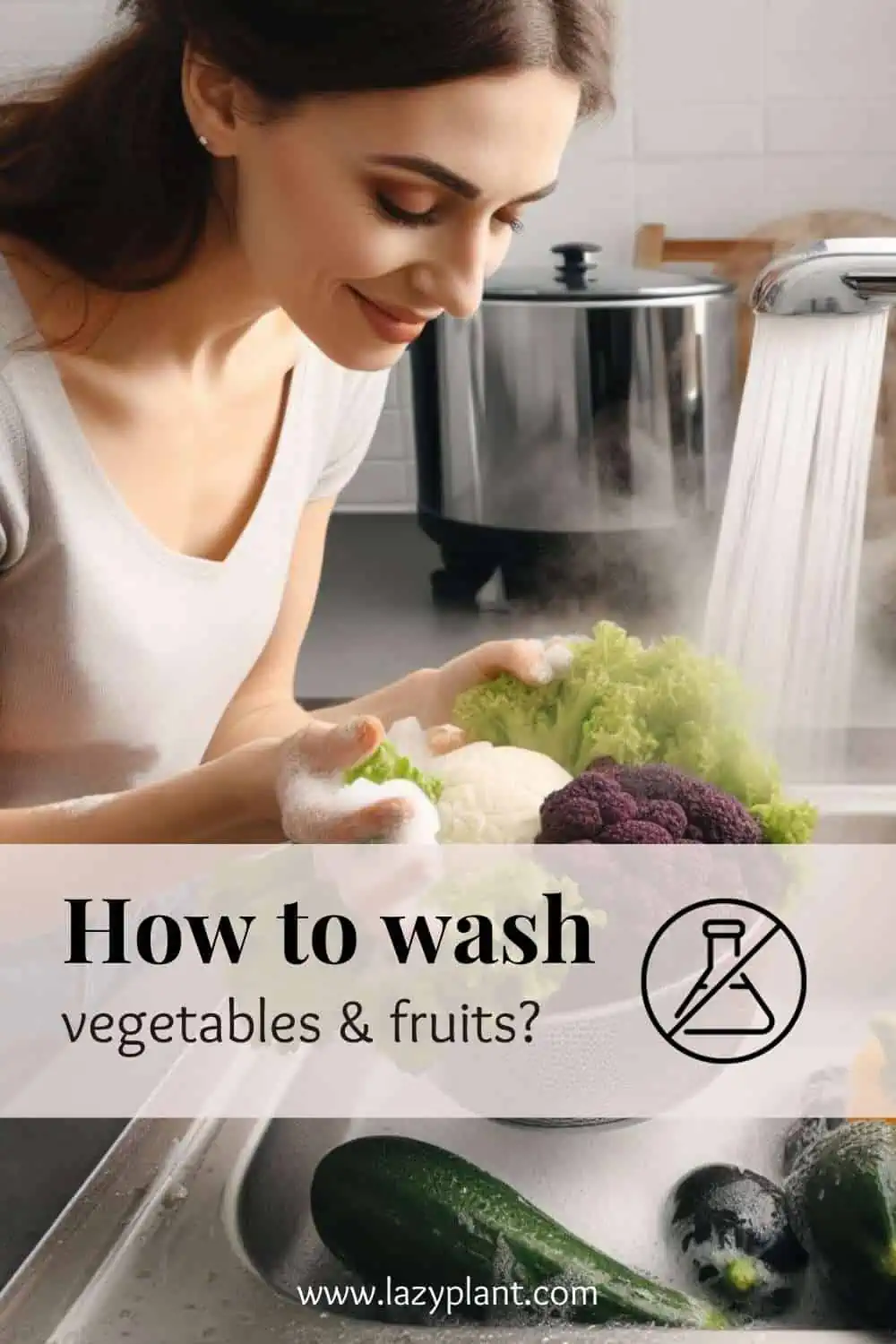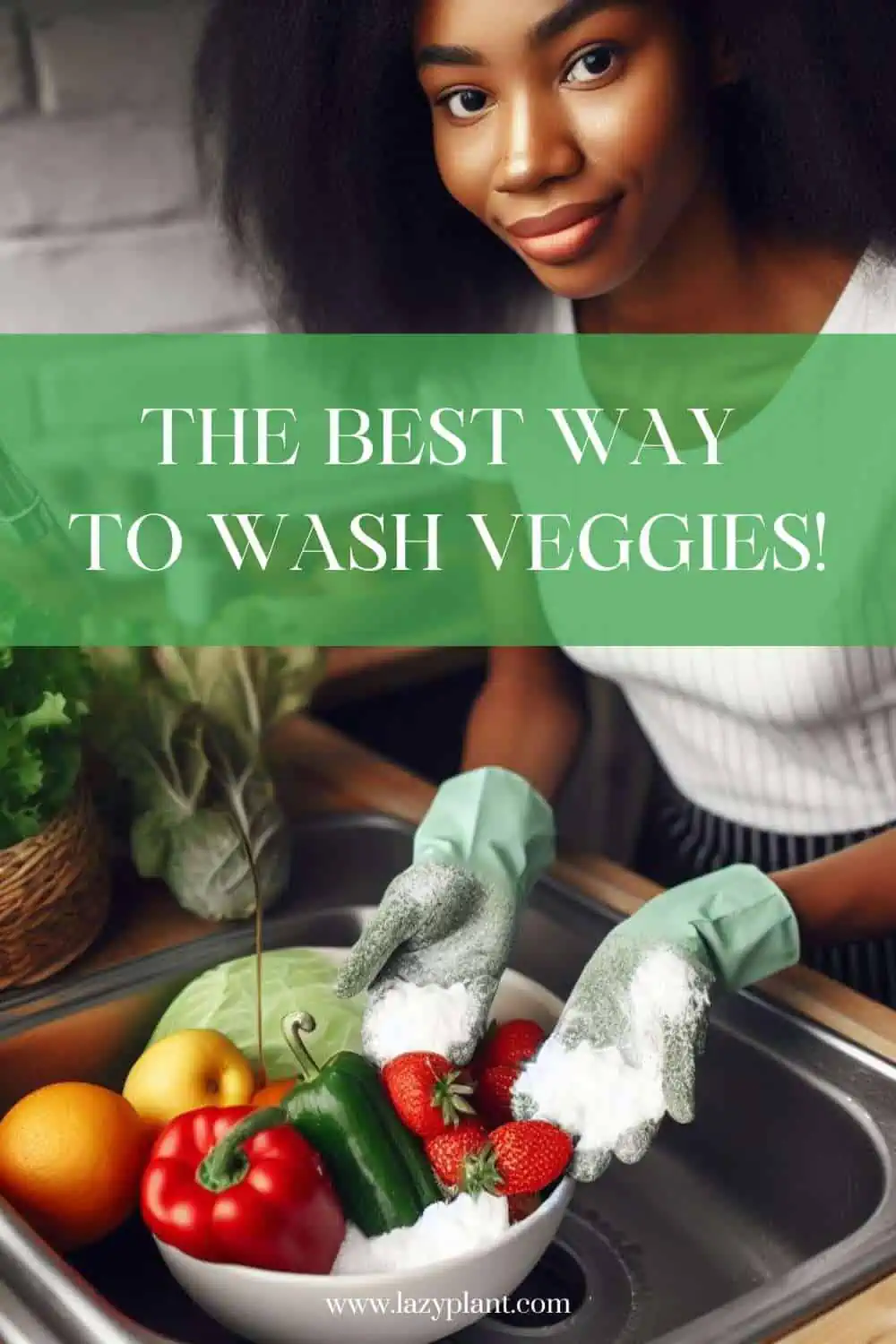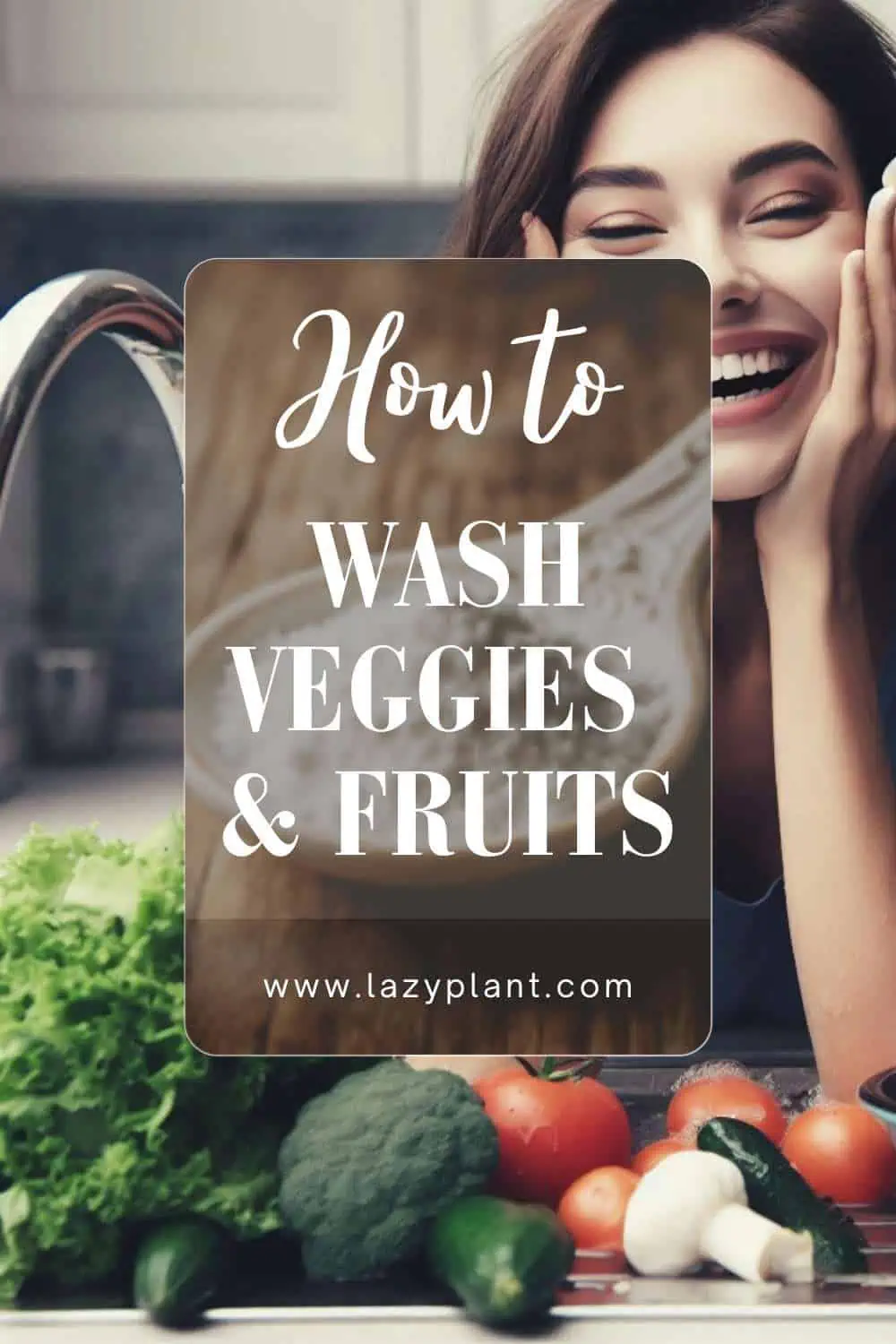Wash vegetables and fruits with warm water with added salt, vinegar or baking soda in order to remove surface pesticide residues or other pathogens.
Furthermore, better to prefer organic, seasonal, locally grown fruits and vegetables to minimize exposure to dangerous chemicals.
How to wash vegetables & fruits?
Pesticides and herbicides tend to concentrate in the peel of vegetables and fruits. We have to wash them thoroughly in order to minimize exposure to these dangerous chemicals.
Most people wash vegetables and fruits only with tap water. In many cases, this isn’t enough, though. Most chemicals remain in the peel of fruits and vegetables.
You can add vinegar or baking soda to the water to properly wash vegetables and fruits.
How to wash vegetables with vinegar?
Vinegar can kill pathogens, such as Escherichia coli. Acetic acid, the main ingredient in vinegar, inhibits the growth of food-borne pathogenic bacteria.
Prefer to use vinegar with at least 2.5% acetic acid in order to properly wash vegetables. The higher the acetic acid concentration, the better.
You can find a wide variety of cheap vinegars on Amazon. Prefer white vinegar with at least 5% acidity.
Scientists found that vinegar with 10% acetic acid concentration can inactivate food pathogenic bacteria in 1 minute (1).
But, if we dilute the vinegar in water, the inactivation time increases significantly. For instance, vinegar with a fourfold dilution will kill the same pathogen in 150 minutes. That’s 21/2 hours.
Washing vegetables and fruits with vinegar is easy:
- In a bowl, add warm water and submerge your vegetables or fruits.
- Add at least 2–3 tablespoons of vinegar.
- Let your vegetables or fruits in the solution for 2–3 hours.
- Rinse them thoroughly.
Wash vegetables & fruits using warm water
Actually, vinegar solution is more effective when warm water is used, instead of water at room temperature. Higher temperature is more effective for killing pathogens.
Researchers discovered that when heated to 45°C, the identical vinegar solution requires 40 times less time than when it’s at 30°C.

Water heated to 50 oC can be even more effective for washing vegetables and fruits. Moreover, vinegar solution that is heated at 75 oC, is found to need only 1 minute to inactivate bacteria.
But, too much heat can destroy nutrients, and alter the flavor and texture of vegetables.
Add salt to the vinegar solution
Another great way to wash fruits and vegetables is by adding salt to the vinegar solution.
Adding 5% salt in a vinegar solution shortened the time required to inactivate pathogens, such as E. coli, to 1/140. The vinegar solution alone needed 740 minutes to fight bacteria. Added salt shortened this time to less than 6 minutes (1).
The best way to wash fruits & vegetables
So, the best way to wash vegetables and fruits is by using a water solution with:
- 5% white vinegar,
- heated to 50 oC (122 F),
- and 2–3 tablespoons of salt.

This is the best solution for washing vegetables and fruits.
- Vinegar solution at 20 oC needs about 740 minutes to kill E. coli.
- Heated solution at 40 oC needs only 15 minutes to kill pathogens
- Heated vinegar solution with added could kill bacteria in under a minute!
Use baking soda to wash fruits & vegetables
Another great way to wash vegetables and fruits is by using baking soda. It also removes surface pesticide residues effectively. In fact, baking soda solution can remove pesticide surface residues in 15 minutes (2).
Seems like, 10 grams of baking soda per 1 liter of water is enough to remove most pesticide surface residues. Actually, a baking soda solution is a really cheap way to wash your veggies.
However, baking soda solution can remove only surface pesticide residues. About 4-20% of pesticides can penetrate deep enough in fruits.

Peeling is the most effective way to remove penetrated pesticides. But it isn’t the best solution. The peel is usually the most nutrient-dense part of the fruit.
Therefore, it’s better to buy seasonal organic fruits and vegetables. In this case, you don’t have to worry about herbicides or pesticides. Just wash them with warm water containing salt and vinegar or baking soda.
Although baking soda is edible, you shouldn’t consume too much. However, small dosages may have significant health benefits for many people.